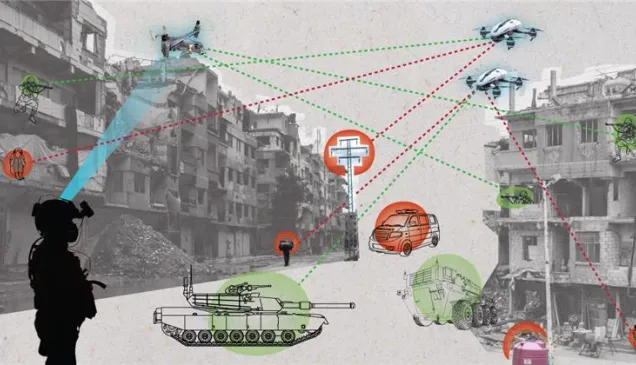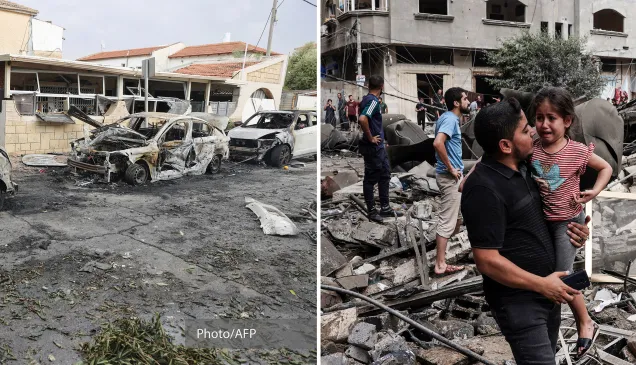Updated Commentary brings fresh insights on continued relevance of Geneva Conventions for treatment of prisoners of war
On 16 June 2020, the ICRC hosted a webinar to launch the updated Commentary on the Third Geneva Conventions. An expert panel discussed the Commentary’s main findings on key humanitarian issues related to the treatment of prisoners of war.
What is acceptable and what is prohibited in armed conflict? The four Geneva Conventions of 1949 form the foundation of international humanitarian law and provide a framework setting out the answers to that question.
Launch of the updated Commentary on the Third Geneva Convention from ICRC on Vimeo.
In the 1950s, the ICRC published a set of commentaries on these Conventions, giving practical guidance on their implementation. But to reflect the developments in law and practice since then, the ICRC commissioned a new set of commentaries which seek to reflect the current interpretations of the Conventions. The updated Commentaries on the First and Second Conventions were published in 2016 and 2017 respectively. The updated Commentary on the Third Geneva Convention related to the treatment of prisoners of war is now available. Jean-Marie Henckaerts, who heads the commentaries project, explains more below.
What's the main aim of the updated Commentaries?
The main aim of the updated Commentaries is to give people an understanding of the law as it is interpreted today, so that it is applied effectively in today's armed conflicts. We see this as an important contribution to reaffirming the continued relevance of the Conventions, generating respect for them and strengthening protection for victims caught up in armed conflict. The experience gained in applying and interpreting the Conventions over the last seven decades has generated a detailed understanding of how they operate in armed conflicts all over the world and in contexts very different from those that led to their adoption. With this, the new Commentaries go far beyond their first editions from the 1950s, which were largely based on the preparatory work for the Conventions and on the experience of the Second World War.
Can you give an example of issues that this new Commentary clarifies?
The Commentary sheds light on many issues, and in particular on the obligations Parties have vis-à-vis prisoners of war. The Third Geneva Convention covers a broad array of considerations relating to a prisoner’s life from the time of capture to their final release and repatriation. Many of the key issues clarified by the updated Commentary concern the changes that have taken place in this connection. For instance, today, medical ethics and data-protection standards are far more developed than in 1949. This raises questions regarding the application of provisions that require medical data to be disclosed, and also about how data should be handled and protected in our digitalized world. Such questions would also extend to the appropriate use by Detaining Powers of electronic means to identify prisoners of war – including biometrics – or of new technologies to conduct surveillance.
The updated Commentary also covers the changes that have taken place in understanding of people’s needs. For example, the Convention covers such matters as disability and mental health, but the terminology used had become obsolete, and an updated interpretation was needed. The Convention has a provision pertaining specifically to respect for women, and the interpretation in this regard had to be updated as well. Thus, this Commentary reflects the changes in practice and other areas that have taken place since the middle of the 20th century.
The answers to these and other questions have both legal and operational dimensions which the Commentary on the Third Geneva Convention addresses.
Who do you anticipate will use this Commentary?
The Commentary is an essential tool for practitioners like military commanders, officers, lawyers and those engaging with detention in armed conflicts. It will be used to train members of the armed forces, prepare instructions for armed forces and ensure that military orders comply with the law. It will also be useful for judges who have to apply humanitarian law, including in criminal courts and tribunals where those accused of violating the law may be prosecuted. Other users include lawyers in government, international organizations, the ICRC and National Red Cross and Red Crescent Societies, as well as academics. There is a strong need for the law to be known and understood by all, and we are confident that the updated Commentary will become an important tool in this regard.
How is this Commentary relevant in view of the prevalence of non-international armed conflicts today?
Security detention is a common practice in all armed conflicts. While the phenomenon of prisoners of war, regulated by the Third Geneva Convention, is pertinent to international armed conflicts, it is important to remember that this Convention was the first treaty to formulate standards of treatment in internment. The Convention develops in detail key principles, such as respect for the life and dignity of the individual, which remain relevant for non-international armed conflicts.
Common Article 3 is a central provision of the Conventions on non-international armed conflicts, and the new Commentary provides a comprehensive interpretation of all the aspects of this "mini Convention". These include its scope of application, the requirement of humane treatment, the care for the wounded and sick, humanitarian activities, and criminal aspects and compliance.
Does the new Commentary take into account other areas of international law?
When the Geneva Conventions were adopted, many areas of international law were still in their infancy, such as human rights law, international criminal law and refugee law, but they have grown significantly in the meantime. These areas of law are complementary to humanitarian law as they all seek to protect persons in need of it. Humanitarian law is not a self-contained body of law; there is a lot of communication with other areas of international law. Therefore, current interpretations offered in the updated Commentary take these developments in other areas into account whenever they are relevant for the interpretation of a Convention rule. There are also developments in other, more technical areas such as the law of treaties or the law on State responsibility which are also reflected in the Commentary.
See also:



